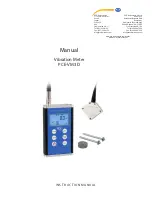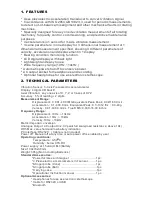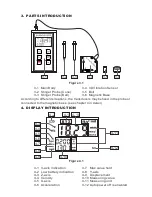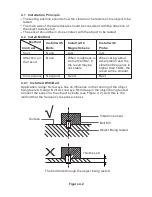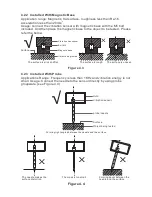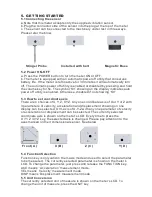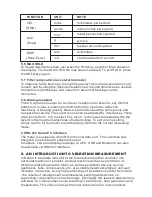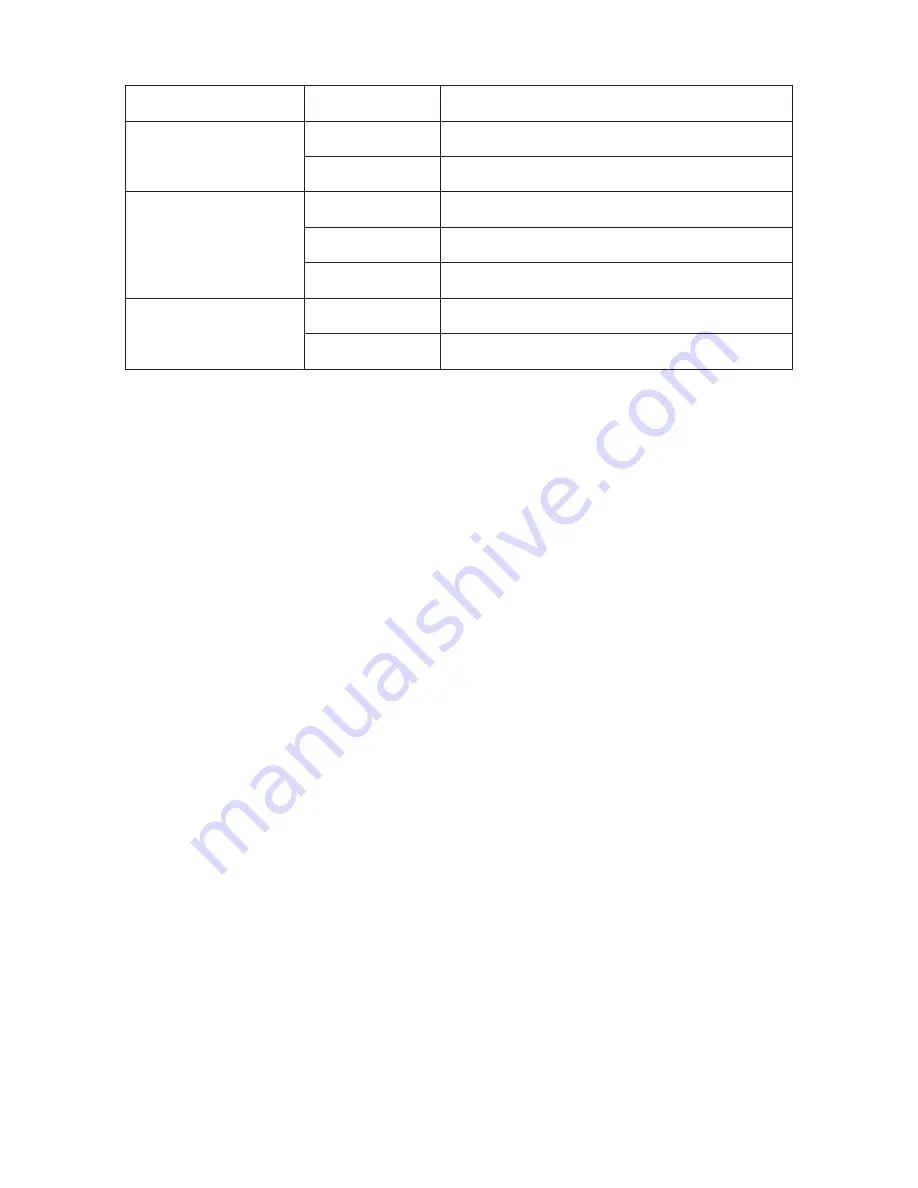
5.6 MAX HOLD
To freeze maximum values, just press the Hold key, a symbol ‘Max’ shows on
the display. The meter will hold the max value measured. To exit HOLD, press
the HOLD key again.
5.7 Filter (only valid in acceleration mode)
To diagnose faulty bearings, the high frequency 10k mode (acceleration only)
is used, and by using the optional headphones, the instrument can be used as
an electronic stethoscope and noise from abnormal bearings can be
monitored.
5.8 Analogue output
This AC signal can output to recorder or headphone to listen for any distinct
patterns or noises. Listening method will help to locate the defective
machinery or bearing quickly. Measure all machines at the same points and
compare the results. The sound volume can be adjusted by Volume key. There
are 8 levels from 1 to 8 to select. The level 1 is the lowest amplitude while the
level 8 is the maximum amplitude of output signal. To exit volume setting,
simply wait 5s for the meter to automatically switch to the normal measuring
mode.
5.9 RS-232 Serial PC Interface
The meter is equipped with an RS-232 serial data port. This interface was
designed to operate with enables the user
to capture, store and display readings on a PC. USB and Bluetooth can also
be available via RS232C interface.
FUNCTION
UNIT
NOTE
VEL
(RMS)
ACC
(Peak)
DISP
(Peak-Peak)
mm/s
Inch/s
g
mm
mil
ft/s
2
m/s
2
millimeters per second
inch/s inches per second
meter per second squared
g-force
feet per second squared
millimeters
one thousandth of an inch
6. AN INTRODUCTION TO VIBRATION MEASUREMENT
Vibration is a reliable indicator of the mechanical health or condition of a
particular machine or product. An ideal machine will have very little or no
vibration indicating that the motor, as well as peripheral devices such as
gearboxes, fans, compressors, etc.,are suitably balanced, aligned, and well
installed. In practice, a very high percentage of installations are far from ideal
, the results of misalignment and imbalance exerting added strain on
supporting components such as bearings. Eventually this leads to added stress
and wear on critical components, resulting in inefficiency, heat generation and
breakdowns. This often occurs at the most inconvenient or uneconomical

